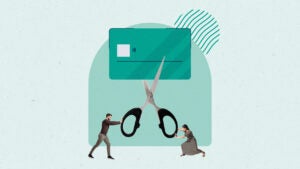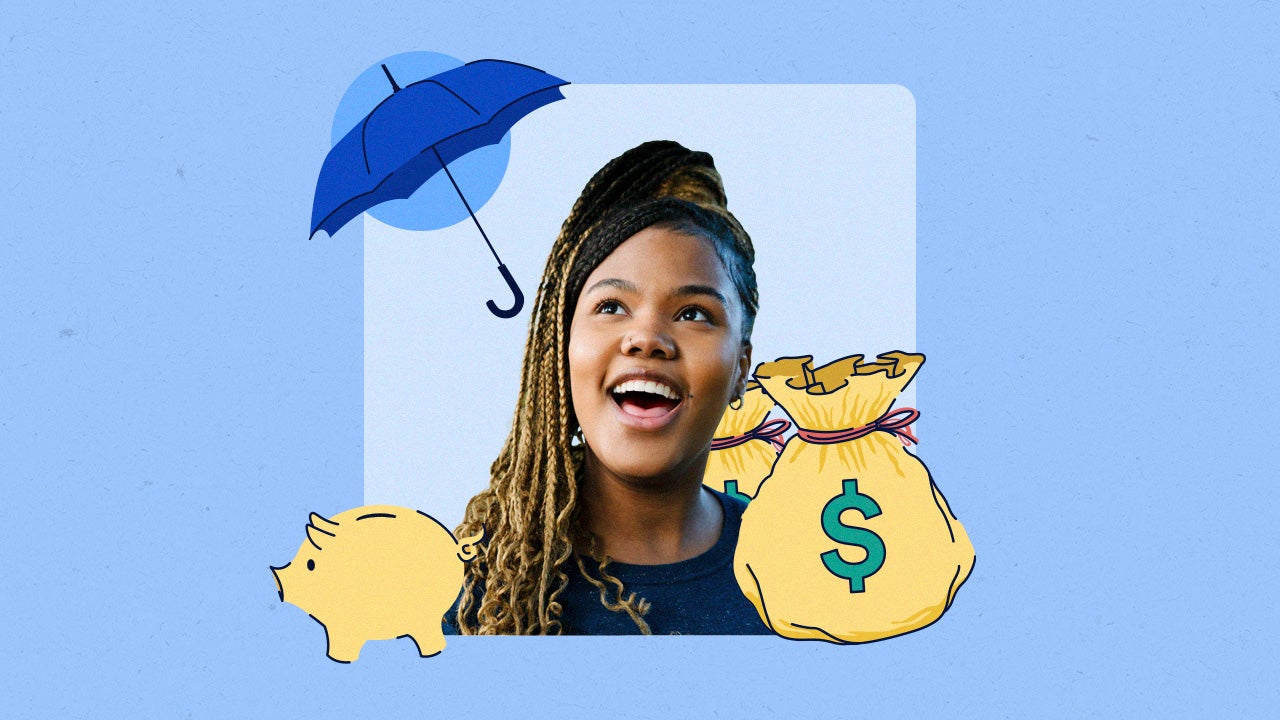Americans are feeling more confident in their ability to pay off debts

As we kick off a new decade, Americans are feeling more positive than they have in years about their ability to pay off debts.
According to a new survey from CreditCards.com, a sister site of Bankrate, just seven percent of U.S. adults with debt expect to die in debt. That’s the lowest percentage in the seven year history of the survey, and much lower than the 25 percent who expected to carry their debt to the grave this time last year.
“Stocks hit numerous record highs this past year, we recently hit the lowest unemployment rate in 50 years, and we’ve enjoyed more than a decade of sustained economic growth,” says Ted Rossman, industry analyst for CreditCards.com, a Bankrate sister site. “These positive stats have Americans feeling good about their debt levels as we enter 2020.”
Types of debt held by Americans
The survey shows that most adults in the U.S. (70 percent) have at least one form of personal debt.
Of those in debt, credit card debt is by far the most common (41 percent of respondents). Other forms of debt that Americans carry include auto loans/leases (26 percent), mortgages (26 percent), student loans (16 percent), medical debt (13 percent), personal loans (12 percent), home equity loans (6 percent) and payday loans (3 percent).
2020: Set goals to lower debt balances
Americans are eager to start working towards paying down debts in 2020. According to the survey, most debtors are confident they’ll make progress in their debt payoff journeys this year in several categories, from auto and personal loans (87 percent) to credit card debt (81 percent) and mortgages (74 percent).
Conversely, student loan debtors are less confident in their ability to make a dent in what they owe this year: just 43 percent of student loan borrowers believe they’ll make progress towards lowering their balances in 2020.
Some borrowers still sliding backwards
Despite consumer confidence, more than a quarter (27 percent) of survey respondents actually anticipate adding to their debts this year, and 12 percent expect to add specifically to their amount of credit card debt.
Taking steps now to eliminate high-interest debt for good can save you money in the long-run.
How you can begin eliminating debt
As a first step, eliminating credit card balances earning sky-high interest rates should be a priority for consumers, according to Rossman.
“It’s the most common type of debt, and the average credit card rate is over 17 percent,” he says. “That’s about four times higher than the average mortgage or auto loan…Sign up for a balance transfer card, take on a side hustle or cut your expenses to get started.”
Transfer your balance
A balance transfer credit card that works with your debt payoff timeline is a great actionable step you can take now to begin eliminating your debt quickly. If you’re willing to commit to paying your debt during the introductory period and stick to your plan, you can save hundreds or even thousands of dollars in interest.
A card like the Citi Simplicity® Card, for example, offers a long intro period of 21 months on balance transfers after account opening, during which you’ll pay zero percent interest on your transferred balance (14.99 percent to 24.99 percent variable APR thereafter). If you transfer a balance of $5,000, you could pay it off in full over that introductory period by making monthly payments of just $238.10 (after accounting for the balance transfer fee: 5% of each balance transfer; $5 minimum ). Balance transfers must be completed within 4 months of account opening.
Budget and cut expenses
According to Tara Unverzagt, a financial planner and founder of South Bay Financial Partners, the most important step you can take to improve your long-term financial health is getting your financial house in order. “If you don’t know or control your cash flow, you’ll never get a handle on your debt.”
She recommends using apps that help you track where your money is going, like You Need A Budget or Mint. You can even get more tactile with a spreadsheet of your own design or a paper journal. If you need to limit yourself to a cash only budget, that can be an effective solution too.
“After a month or two, you get an idea of [whether] your outflow is bigger than your inflow and creating your problem,” Unverzagt says. “If it is, find where you can cut back to balance the two. And you do need to include…setting some money aside for an emergency fund, opportunity fund and investing for your future [in your outflow]. The balance of how much to throw at paying down debt, emergency and opportunity fund and the future, is personal and we work with clients to find the right balance to maximize their quality of life now and into the future.”
Find a payoff plan that works for you
Tailoring your plan to your individual financial situation can be key to your long-term payoff success.
If student loan debt is your biggest obstacle, for example, it’s important to choose your best repayment plan option with your loan servicer, whether that’s a standard ten-year plan, a graduated repayment plan, income-based plan or otherwise. If you’re eligible for federal loan forgiveness, talk to your servicer about the steps you need to take for the best chance of having that forgiveness granted.
Consider refinancing a high-interest student loan with a personal loan to reduce your interest commitment. Refinancing can eliminate other federal student loan benefits like loan forgiveness and repayment options, so take time to ensure it’s the right choice for you before taking the plunge. If balance transfer cards aren’t the solution for you, refinancing and consolidation can also be effective ways to pay off credit card debt.
Whether your debt is concentrated in credit cards, student loans, medical debt or another loan type, a structured payoff plan like the snowball or avalanche method can help you eliminate your debt efficiently. When your budget allows, you can also try making multiple payments each month and paying over your required minimum to reduce interest.
Bottom line
No matter which type of debt is holding you back from your financial goals, getting started on the right path towards repayment via a balance transfer, budgeting and cutting costs sooner rather than later can save you money over time and achieve lasting financial health.





